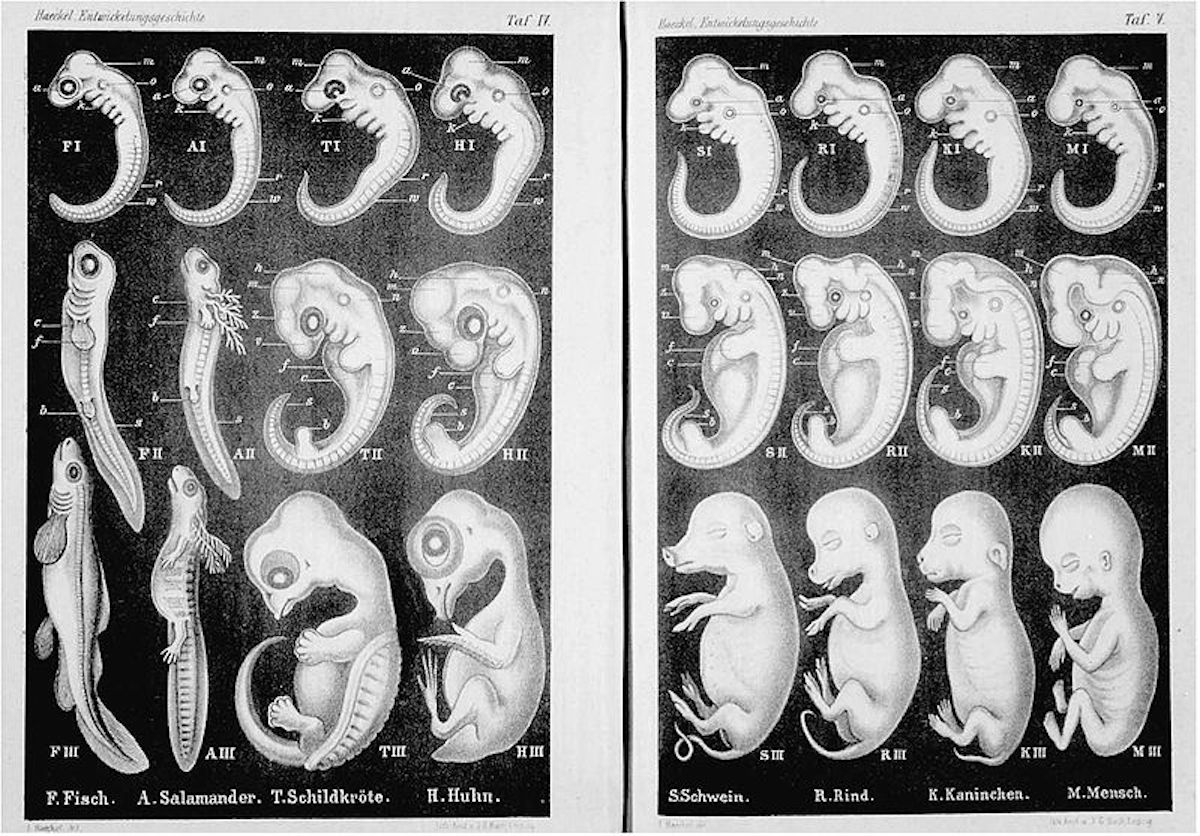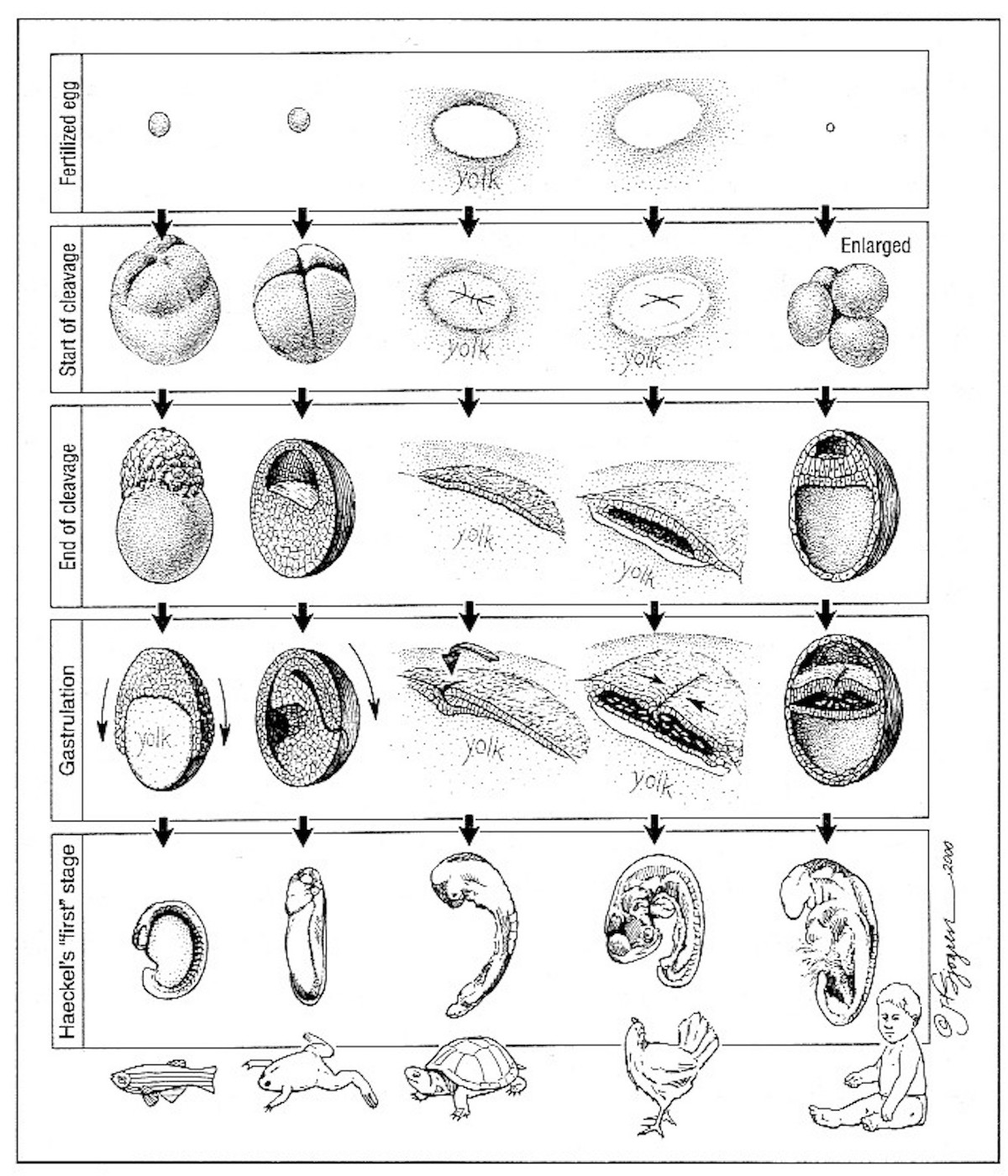 Culture & Ethics
Culture & Ethics
 Life Sciences
Life Sciences
Why Should a Baby Live?

Editor’s note: We are saddened by the passing of our friend and colleague, the iconoclastic biologist Jonathan Wells. As a tribute, we are presenting some highlights from his work. This is part one of a two-part series by Dr. Wells.
My title is adapted from a 2012 article by two philosophers, Alberto Giubilini and Francesca Minerva. The article was titled “After-birth abortion: why should the baby live?” Giubilini and Minerva argued that “fetuses and newborns do not have the same moral status as actual persons.” In a follow-up article defending their position, the authors pointed out that “Catholic and pro-life philosophers,” among others, hold that “fetuses and newborns share the same moral status.”
I am not a Roman Catholic, but the published is that fetuses, like newborns, have full human rights: “From the moment of conception… a human being must be recognized as having the rights of a person — among which is the inviolable right of every innocent being to life.” Giubilini and Miverva simply turned the logic around and argued that since “abortion is largely accepted,” newborns (like fetuses) do not have the rights of a person.
According to several online dictionaries, the definition of “human” includes “person.” Obviously, however, the noun “person” has for many people become a philosophical and legal term, divorced from the noun “human.” Things have gone so far that some animal-rights advocates now claim that the great apes should be recognized as persons. What follows, however, is not a philosophical or legal discussion of personhood. Instead, as a developmental biologist I will simply try to give scientific answers to two questions: (1) Does the union of a human sperm and a human egg produce a human being? And (2) At what point in its development can a human being feel pain?
What Is Science?
Before I answer the questions, I will explain what I mean by “science.” In one sense, science is the enterprise of seeking truth by formulating hypotheses and testing them against the evidence. If a hypothesis is repeatedly tested and found to be consistent with the evidence, we may tentatively regard it as true. If it is repeatedly found to be inconsistent with the evidence, we should revise it or reject it as false. This is empirical science.
In a second sense, science can refer to the enterprise of providing natural explanations for everything — that is, accounting for all phenomena in terms of material objects and the physical forces among them. But this is equivalent to materialistic philosophy, which regards material objects and physical forces as the only realities. Mind, free will, spirit, and God are considered illusions. This is materialistic science.
In a third sense, science can refer to the scientific establishment, which consists of people who are trained and employed to conduct research in various areas. The majority opinion of this group is referred to as “the scientific consensus.” Unfortunately, the scientific consensus has changed many times in the course of history, so it is not a reliable guide to the truth. And although many people in the scientific establishment do excellent empirical science, the scientific consensus is currently dominated by materialistic philosophy.
I am not a materialist, and I do not rely on the scientific consensus. For me, science is empirical, and what matters is the evidence. So I will rely on evidence in attempting to answer the two questions I posed above.
The Union of a Human Sperm and a Human Egg
In what follows, development is assumed to be normal. In a mother-to-be, ovulation (the release of an egg from an ovary) occurs approximately two weeks after the beginning of her last menstruation. If sperm are present, the egg is fertilized as it travels down the fallopian tube on its way to the uterus. Since the day of ovulation (and hence fertilization) is approximate, pregnancy is conventionally measured from the beginning of the last menstrual period (LPM). Paradoxically, this means that a human embryo is already about two weeks old when it forms. As the embryo develops, “gestational age” refers to the time from the LPM, while “embryonic age” is its actual age. Both are approximate.
Within the first day or so after the sperm enters the egg, the male nucleus (from the sperm) and female nucleus (in the egg) combine in a process called “syngamy” to form the “zygote.” This cell is completely human genetically. But isolated cells from a human body are also genetically human, yet they are not complete human beings. So some people have argued that the zygote (and subsequently the embryo and fetus) is simply a part of the mother.
The zygote soon begins dividing, and by the third day (embryonic age) the embryo consists of 8-16 cells. It is still traveling down the fallopian tube toward the uterus. On approximately the sixth day (embryonic age) the embryo attaches itself to the wall of the uterus (a process called “implantation”). The placenta soon begins to form. During this time the embryo can split to produce “identical” (monozygotic) twins or (rarely) triplets.
By the end of two weeks (embryonic age), the cells that will become the embryo have formed a disc, and in the following week a groove forms in the disc through which cells will migrate as they establish the major tissues and the body plan. This process is called “gastrulation.” According to embryologist Lewis Wolpert, “it is not birth, marriage, or death, but gastrulation which is truly the most important time in your life.” By the time of gastrulation, it is clear that the embryo is not just a part of the mother. Although it is still dependent for many things on the mother, it is by now an integrated, self-directing organism with a life of its own.
By the end of the fourth week (embryonic age; sixth week gestational age) the embryo starts passing through what some biologists have called the “phylotypic stage,” a period during which the embryos of various vertebrates (animals with backbones) somewhat resemble each other.
Haeckel’s Embryos
In 1868, German Darwinist Ernst Haeckel published a drawing of eight embryos: a fish, a salamander, a turtle, a chick, and four mammals (hog, calf, rabbit, and human). Each was shown in three stages of development. In the earliest stage (at the top), the embryos are strikingly similar.

Charles Darwin considered the supposed similarity of early embryos “by far the strongest single class of facts in favour of” his theory of descent with modification.
He wrote in 1869, “it is highly probable that with many animals the embryonic or larval stages show us, more or less completely, the state of the progenitor of the whole group in its adult condition.” Along the same lines, Haeckel argued that in the course of development an embryo “recapitulates” its evolutionary history.
A century later, shortly before the U.S. Supreme Court’s decision in Roe v. Wade, legal scholar Cyril Means Jr. published a letter in the New York Times using Haeckel to justify abortion. Means argued that “embryological investigation beginning with Haeckel” showed that it was permissible “to destroy a fetus, still at the stage known to zoologists and embryologists as that of subhuman ancestral reminiscence.” (For other uses of Haeckel to justify abortion, see Chapter 14 of John G. West’s Darwin Day in America.)
But Haeckel’s drawing was known to misrepresent the truth even in his own lifetime. For one thing, the embryos portrayed as the earliest in his drawing were distorted to look more alike than they really are. For another, they were notfrom the earliest stage of development. The early embryos of the animals in Haeckel’s drawing actually look very different from each other:

As this more realistic drawing shows, mammals (the column on the far right) are very different from the other groups in their first cell divisions (the second row from the top). Differences among the five groups continue to be evident at every stage up to and including the “phylotypic stage” that Haeckel misrepresented as the first (second row from the bottom).
The figure above shows that mammals differ dramatically from fish, amphibians reptiles, and birds. But gastrulation in human embryos (third row from the bottom) is also different in some respects from gastrulation in mice.1 So the available embryological evidence suggests that early human development differs not only from fish, amphibians, reptiles, and birds, but also from other mammals.
As the human embryo continues to develop, it forms a heart that begins to beat. The embryo also develops eyes, ears, and a nose; arms with fingers and legs with toes; external genitals; and all its internal organs. By the end of eight weeks (embryonic age; ten weeks gestational age), the embryo looks fully human and is now called a fetus. Clearly, at this point — three weeks before the end of the first trimester of pregnancy — the fetus is physically identifiable as a human being.
A Rose Is a Rose Is a Rose
But there is another line of evidence that suggests the baby was a human being much earlier. Embryologists know that a fertilized egg of the fruit fly Drosophila melanogaster, if it survives and is provided with suitable conditions, will always develop into an adult Drosophila melanogaster. Fruit flies have been widely studied by embryologists, who have generated and studied hundreds of developmental mutations in them. The evidence from decades of such studies suggests that there are only three possible outcomes: a normal Drosophila melanogaster, a defective Drosophila melanogaster, or a dead Drosophila melanogaster. Not even a sister species, Drosophila simulans.
Embryologists have also generated and studied hundreds of mutations in the roundworm Caenorhabditis elegans, in the zebrafish Danio rerio, and in the house mouse Mus musculus. Again, there are only three possible outcomes: normal, defective, or dead. The embryo remains the same species from fertilization to adulthood. Although it would be highly unethical to generate mutations in a human zygote, we have no reason to believe that the possible outcomes would be any different in Homo sapiens.
So from the embryological evidence we can conclude that a human zygote is a human being from the moment of its formation. Just as a developing fruit fly is never anything but a fruit fly, so a developing human being is never anything but a human being. To deny this is to deny the evidence — which is equivalent to denying empirical science.
Next, “At What Point In Its Development Can a Human Being Feel Pain?”
Notes
- G. S. Eakin and R. R. Behringer, “Gastrulation in Other Mammals and Humans,” pp. 275-287 in Claudio D. Stern (ed.), Gastrulation: From Cell to Embryo (Cold Spring Harbor, NY: Cold Spring Harbor Laboratory Press, 2004).

